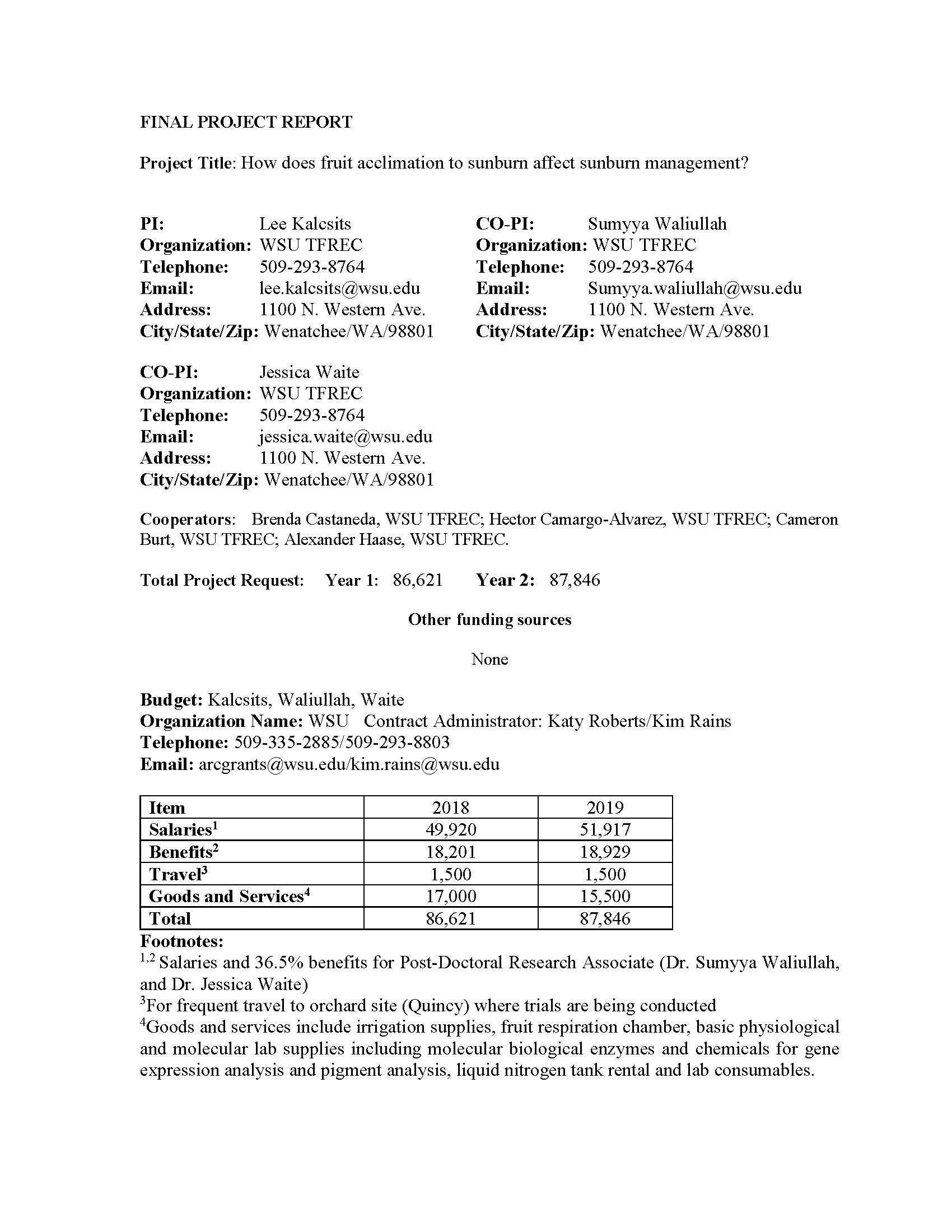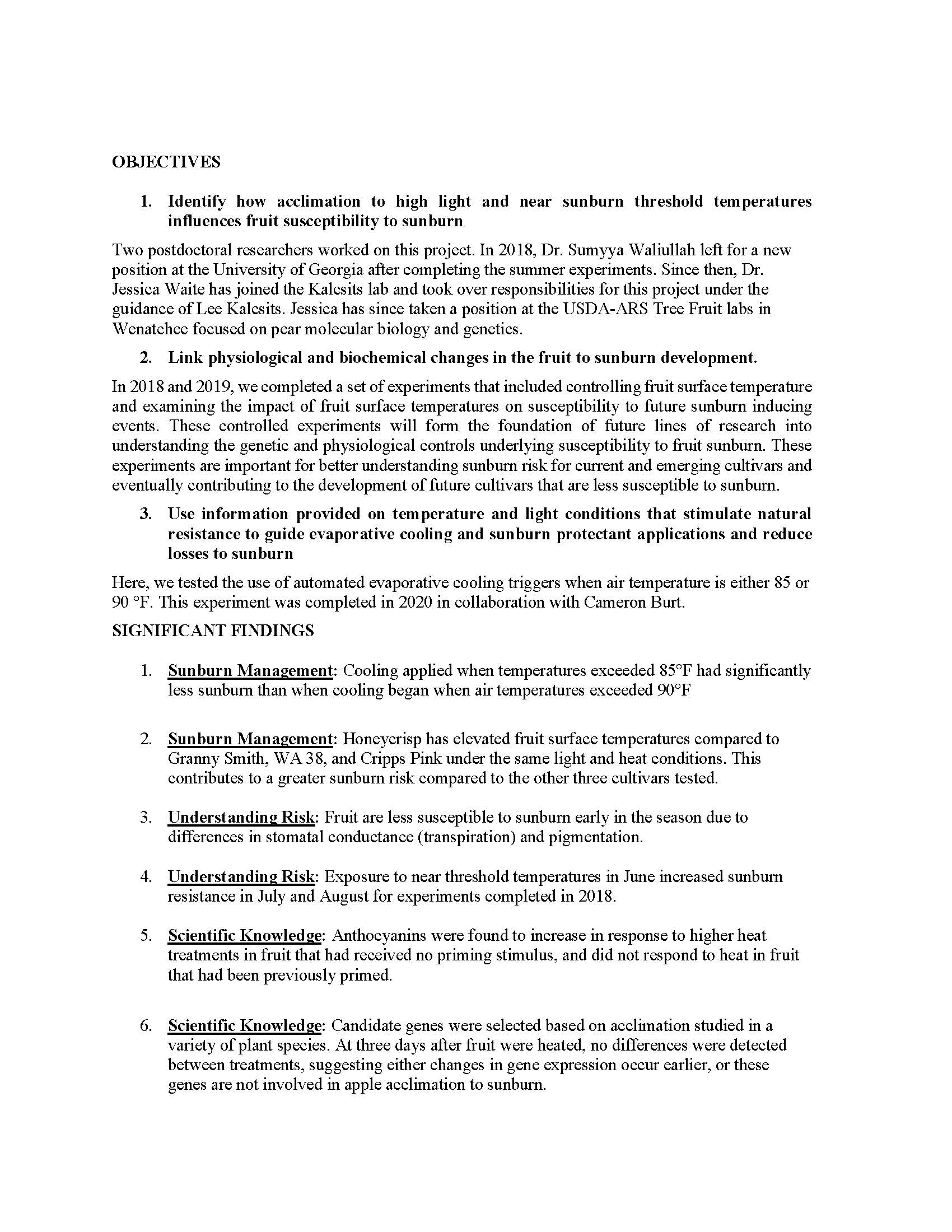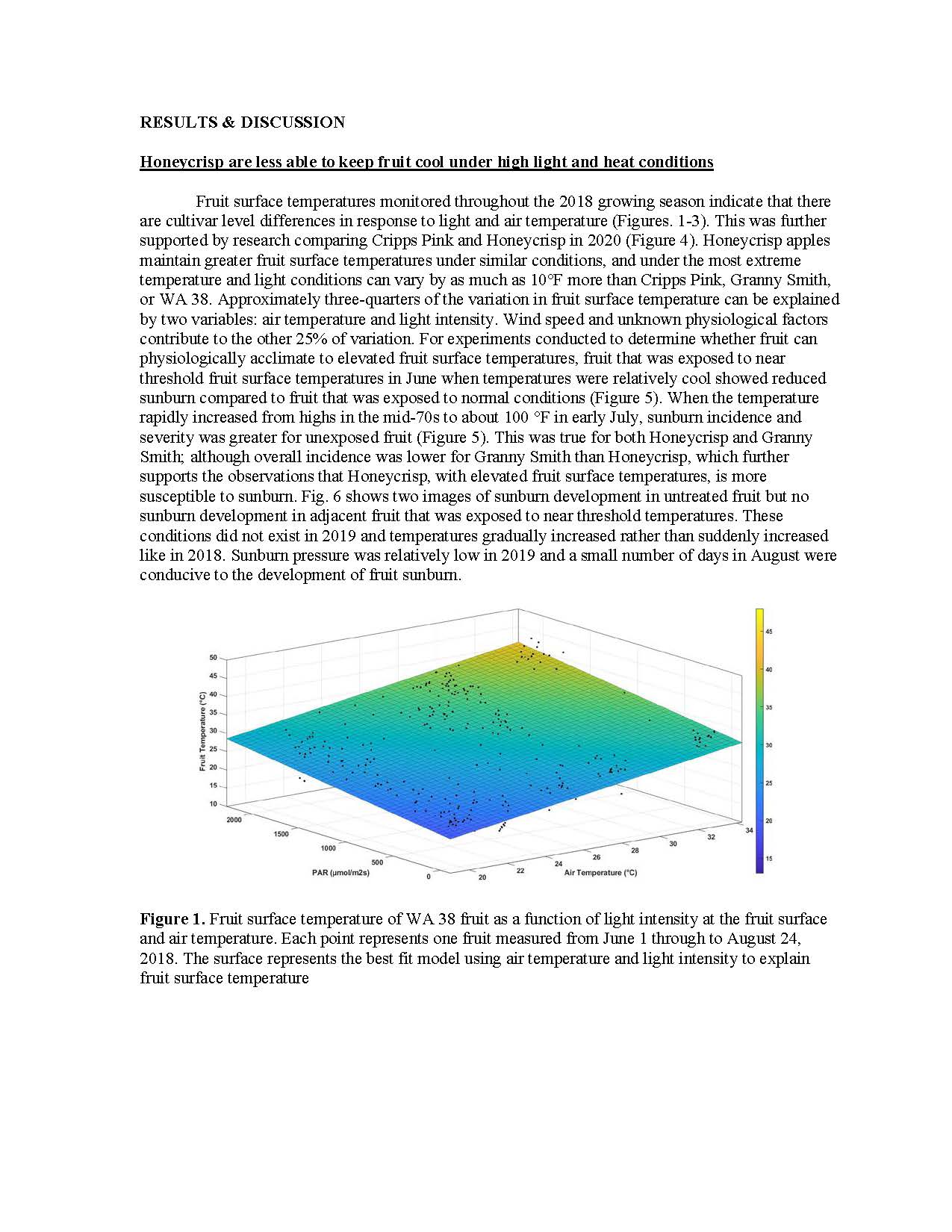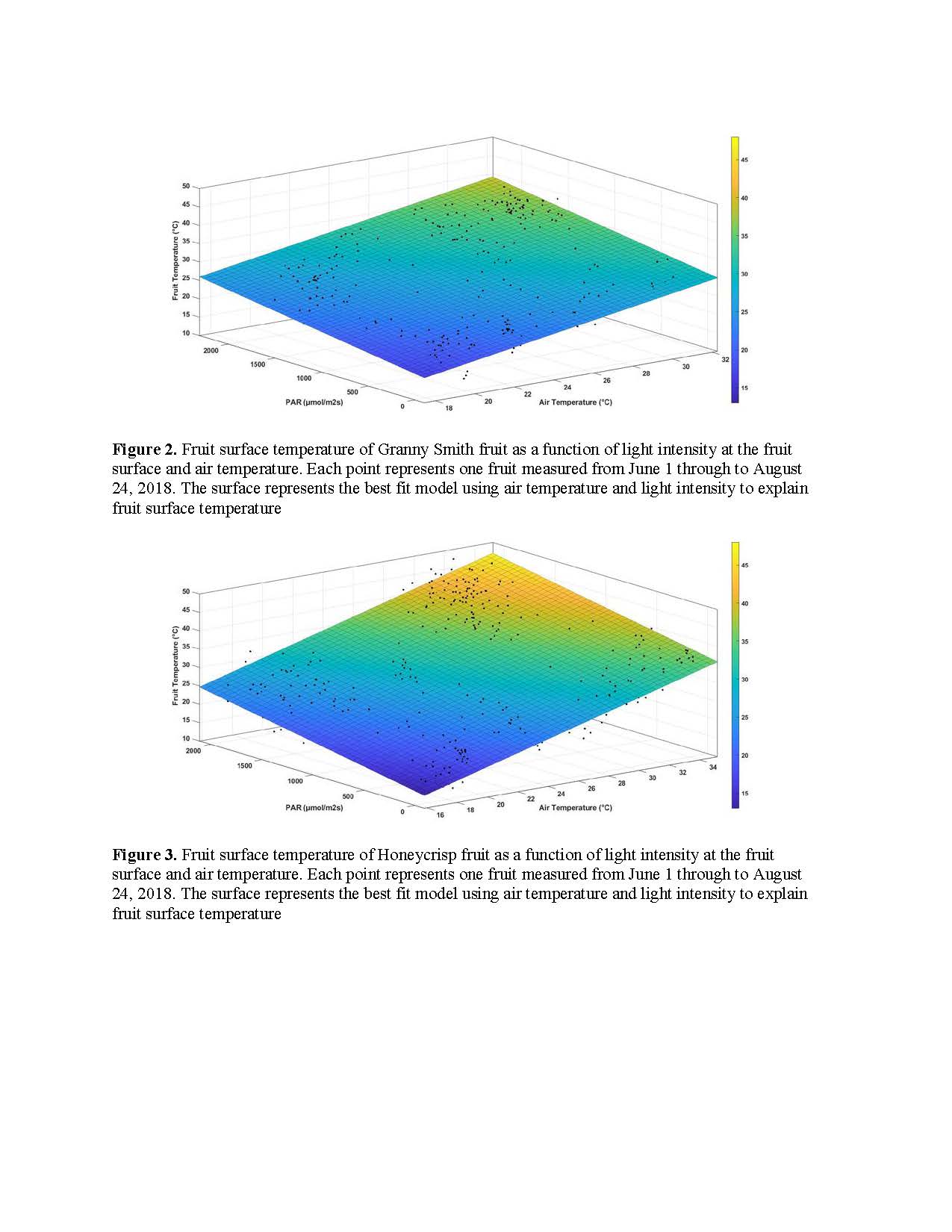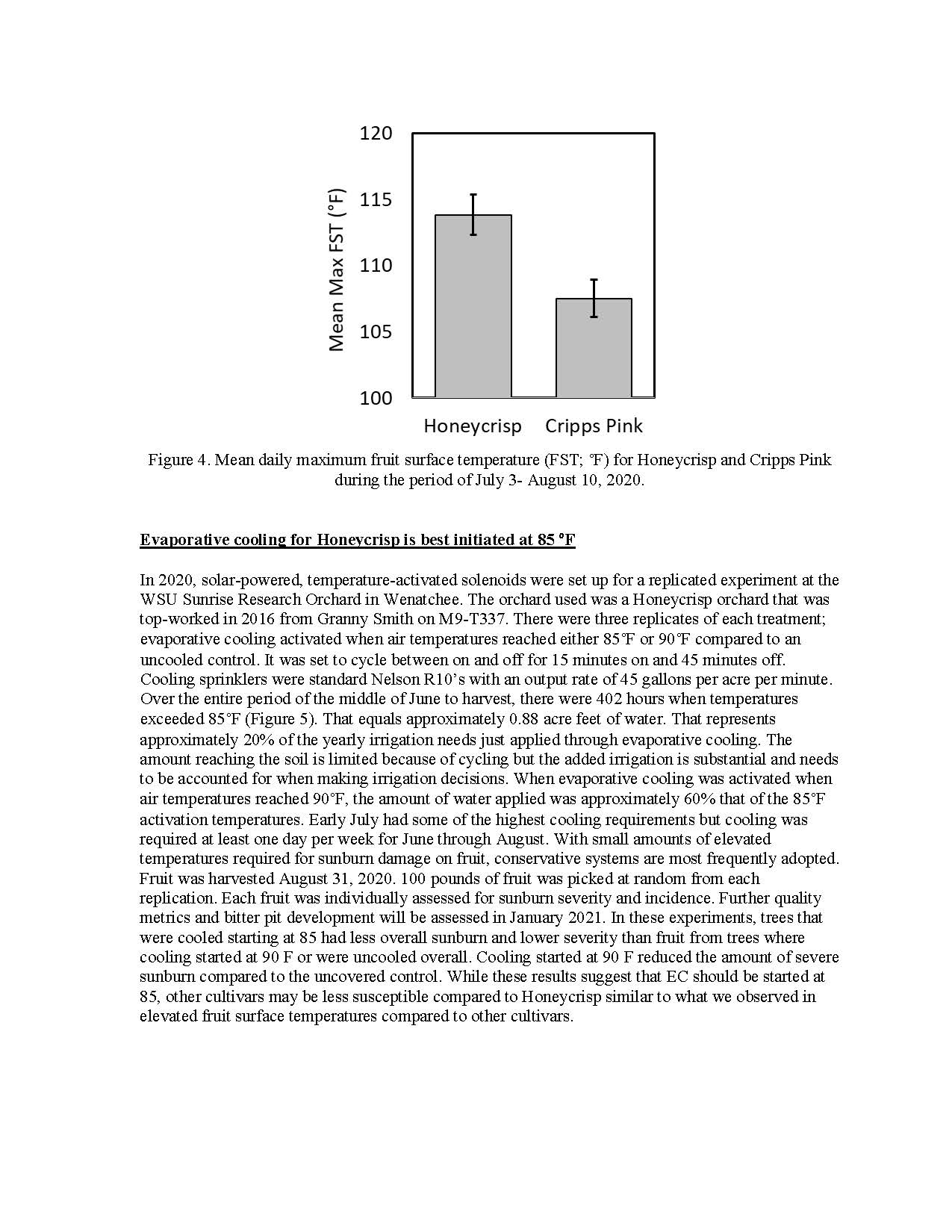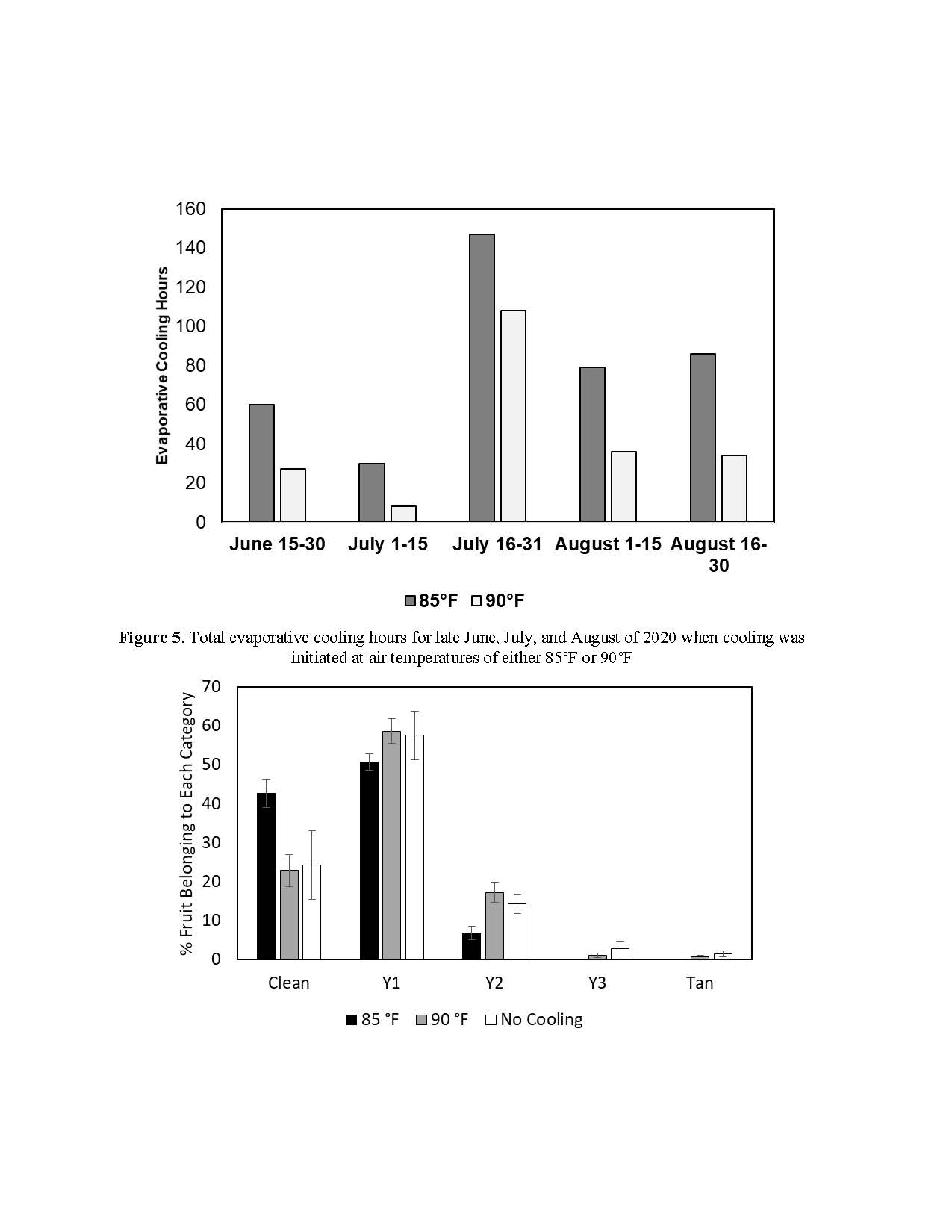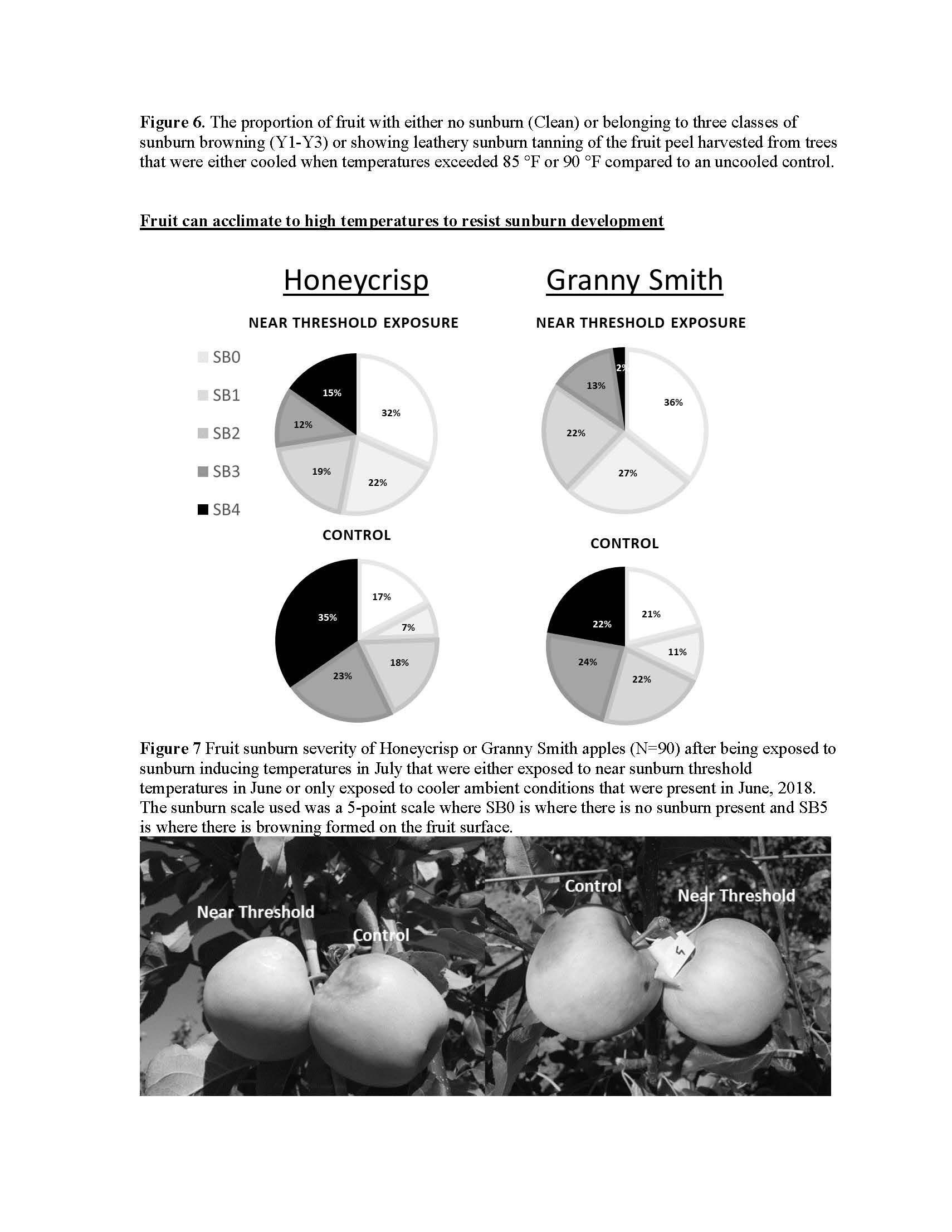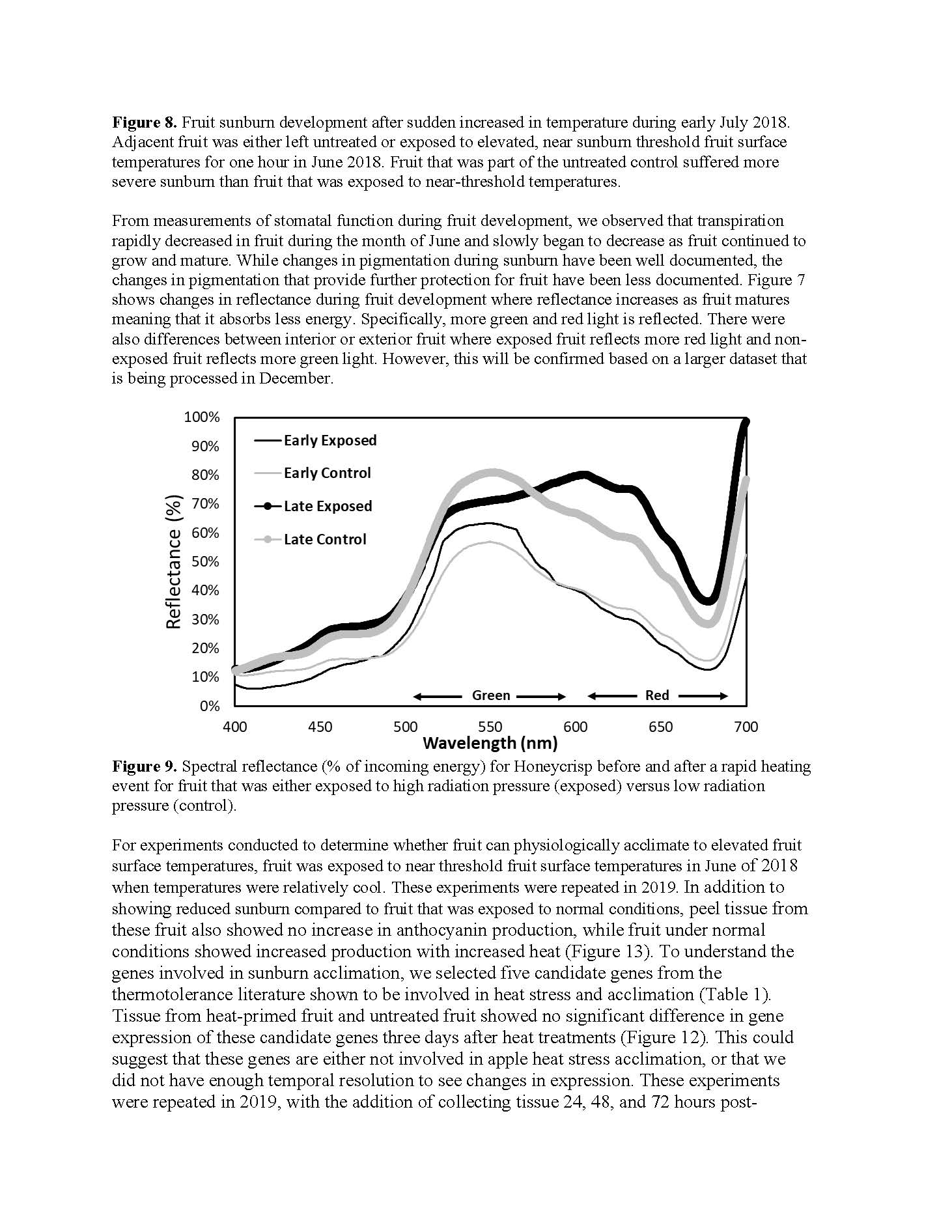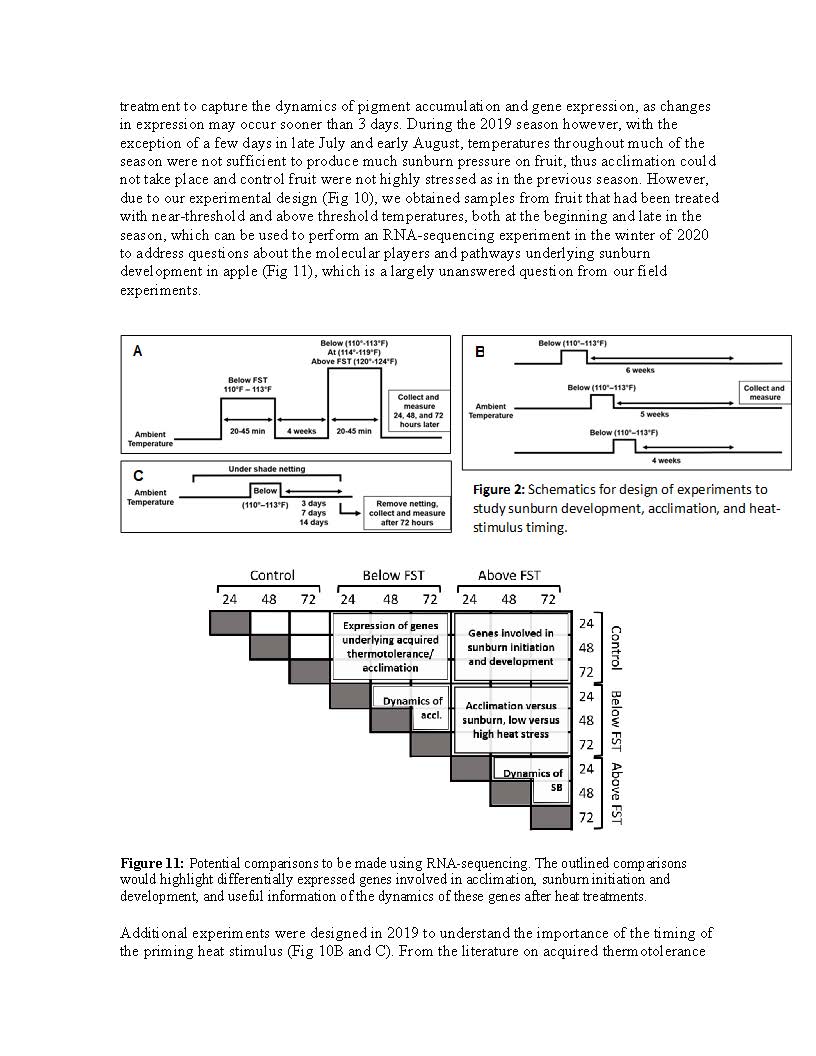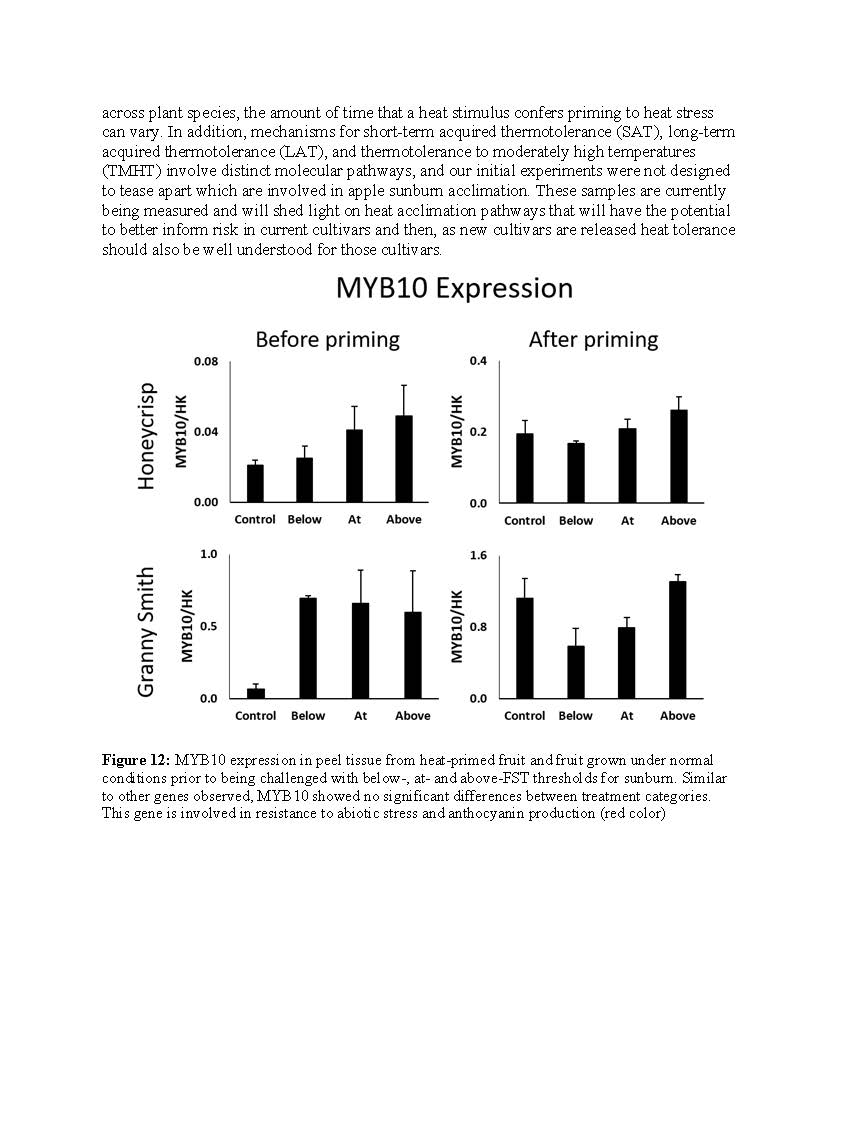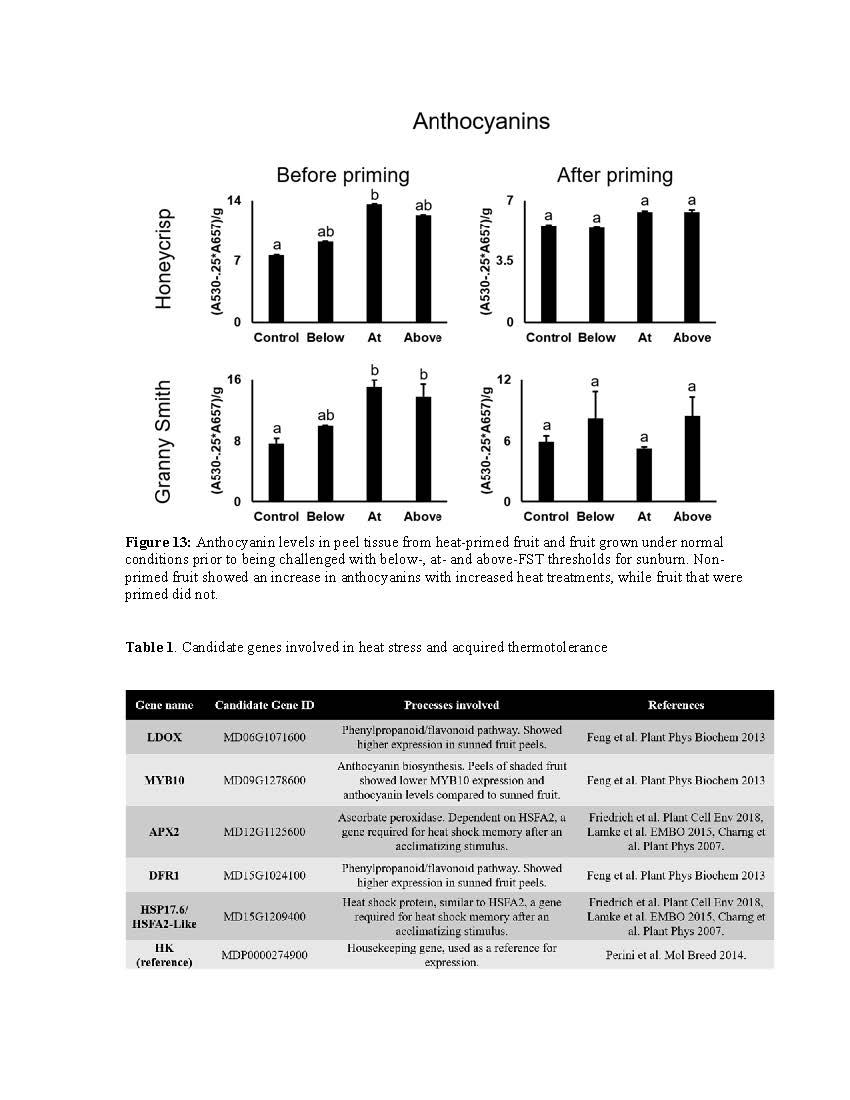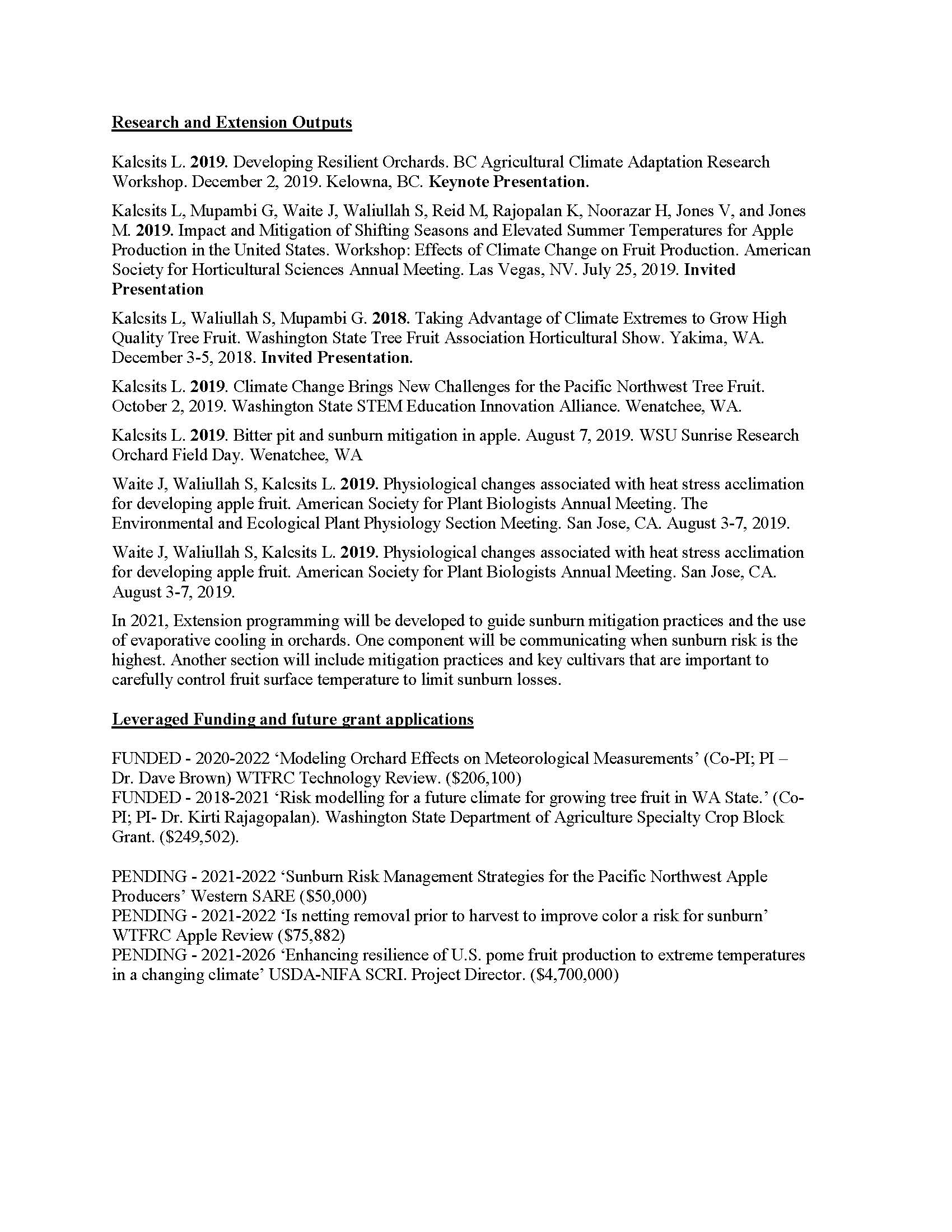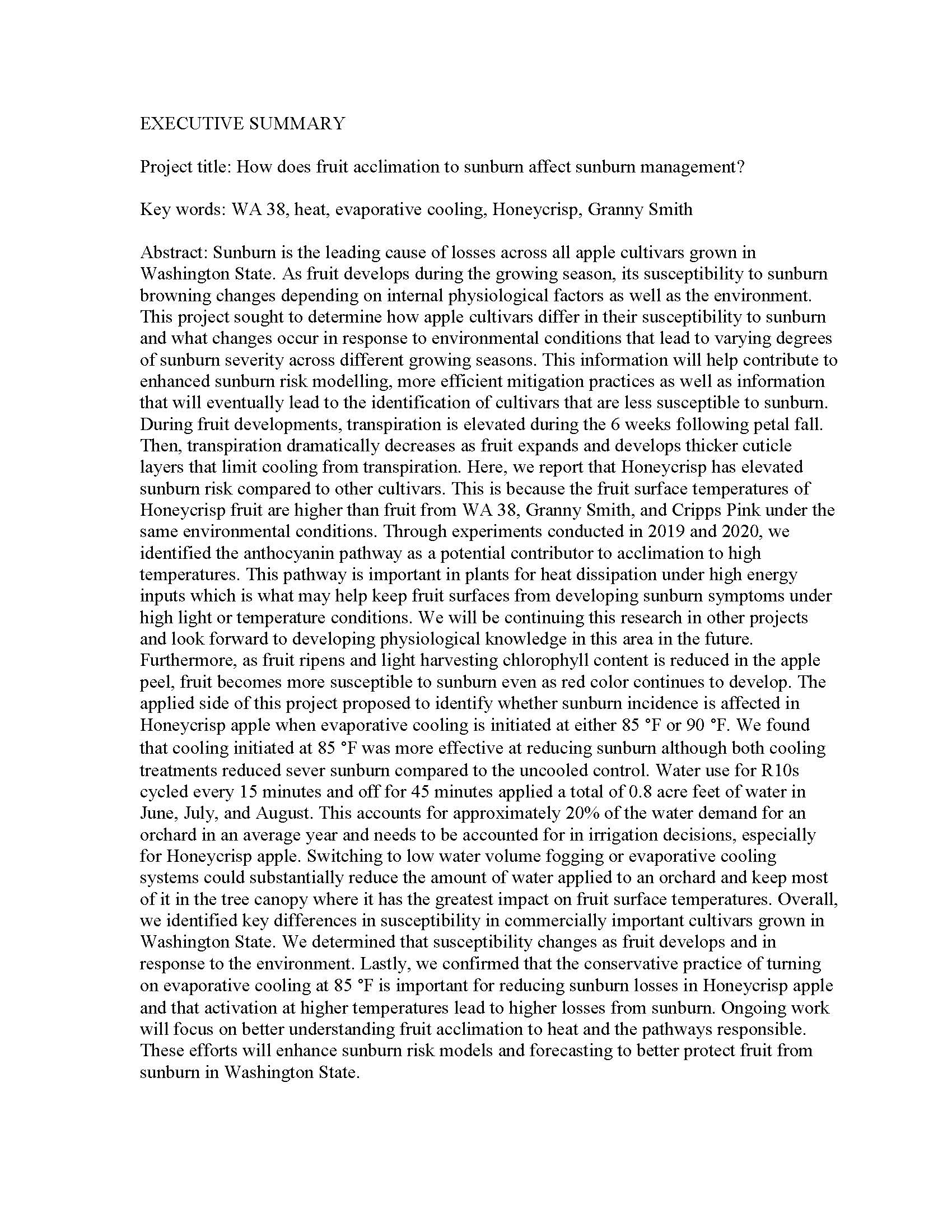How does fruit acclimation to sunburn affect sunburn management?
Author: Lee Kalcsits, Sumyya Waliullah, Jessica Waite
Published: 2021
Summary: Abstract: Sunburn is the leading cause of losses across all apple cultivars grown in Washington State. As fruit develops during the growing season, its susceptibility to sunburn browning changes depending on internal physiological factors as well as the environment. This project sought to determine how apple cultivars differ in their susceptibility to sunburn and what changes occur in response to environmental conditions that lead to varying degrees of sunburn severity across different growing seasons. This information will help contribute to enhanced sunburn risk modelling, more efficient mitigation practices as well as information that will eventually lead to the identification of cultivars that are less susceptible to sunburn. During fruit developments, transpiration is elevated during the 6 weeks following petal fall. Then, transpiration dramatically decreases as fruit expands and develops thicker cuticle layers that limit cooling from transpiration. Here, we report that Honeycrisp has elevated sunburn risk compared to other cultivars. This is because the fruit surface temperatures of Honeycrisp fruit are higher than fruit from WA 38, Granny Smith, and Cripps Pink under the same environmental conditions. Through experiments conducted in 2019 and 2020, we identified the anthocyanin pathway as a potential contributor to acclimation to high temperatures. This pathway is important in plants for heat dissipation under high energy inputs which is what may help keep fruit surfaces from developing sunburn symptoms under high light or temperature conditions. We will be continuing this research in other projects and look forward to developing physiological knowledge in this area in the future. Furthermore, as fruit ripens and light harvesting chlorophyll content is reduced in the apple peel, fruit becomes more susceptible to sunburn even as red color continues to develop. The applied side of this project proposed to identify whether sunburn incidence is affected in Honeycrisp apple when evaporative cooling is initiated at either 85 °F or 90 °F. We found that cooling initiated at 85 °F was more effective at reducing sunburn although both cooling treatments reduced sever sunburn compared to the uncooled control. Water use for R10s cycled every 15 minutes and off for 45 minutes applied a total of 0.8 acre feet of water in June, July, and August. This accounts for approximately 20% of the water demand for an orchard in an average year and needs to be accounted for in irrigation decisions, especially for Honeycrisp apple. Switching to low water volume fogging or evaporative cooling systems could substantially reduce the amount of water applied to an orchard and keep most of it in the tree canopy where it has the greatest impact on fruit surface temperatures. Overall, we identified key differences in susceptibility in commercially important cultivars grown in Washington State. We determined that susceptibility changes as fruit develops and in response to the environment. Lastly, we confirmed that the conservative practice of turning on evaporative cooling at 85 °F is important for reducing sunburn losses in Honeycrisp apple and that activation at higher temperatures lead to higher losses from sunburn. Ongoing work will focus on better understanding fruit acclimation to heat and the pathways responsible. These efforts will enhance sunburn risk models and forecasting to better protect fruit from sunburn in Washington State.
Keywords:

